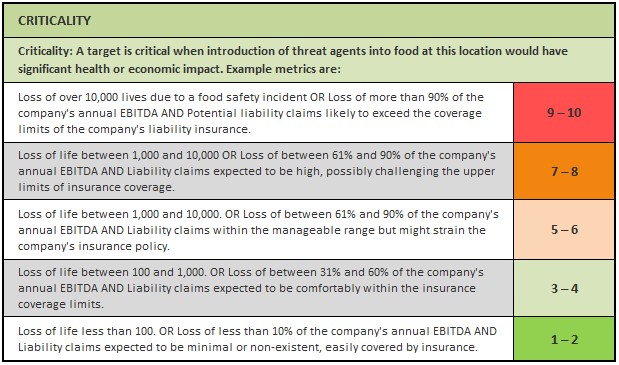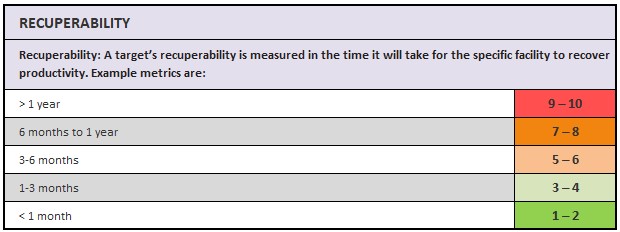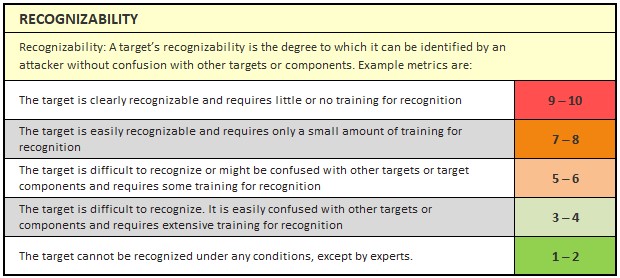Title Page
-
Site conducted
-
Conducted on
-
Prepared by
-
Location
CARVER + Shock
-
CRITICALITY: A target is critical when introduction of threat agents into food at this location would have significant health or economic impact.
-
ACCESSIBILITY A target is accessible when an attacker can reach the target to conduct the attack and egress the target undetected. Accessibility is the openness of the target to the threat. This measure is independent of the probability of successful introduction of threat agents.
-
RECUPERABILITY: A target’s recuperability is measured in the time it will take for the specific system to recover productivity. The effect of a possible decrease in demand is considered in this criterion.
-
VULNERABILITY: A measure of the ease with which threat agents can be introduced in quantities sufficient to achieve the attacker’s purpose once the target has been reached. Vulnerability is determined both by the characteristics of the target (e.g., ease of introducing agents, ability to uniformly mix agents into target) and the characteristics of the surrounding environment (ability to work unobserved, time available for introduction of agents). It is also important to consider what interventions are already in place that might thwart an attack.
-
EFFECT: Effect is a measure of the percentage of system productivity damaged by an attack at a single facility. Thus, effect is inversely related to the total number of facilities producing the same product.
-
RECOGNIZABILITY: A target’s recognizability is the degree to which it can be identified by an attacker without confusion with other targets or components.
-
SHOCK: Shock is the final attribute considered in the methodology. Shock is the combined measure of the health, psychological, and collateral economic impacts of a successful attack on the target system. Shock is considered on a national level. The psychological impact will be increased if there are a large number of deaths or the target has historical, cultural, religious or other symbolic significance. Mass casualties are not required to achieve widespread economic loss or psychological damage. Collateral economic damage includes such items as decreased economic activity, increased unemployment in collateral industries, etc. Psychological impact will be increased if victims are members of sensitive subpopulations such as children or the elderly.


















